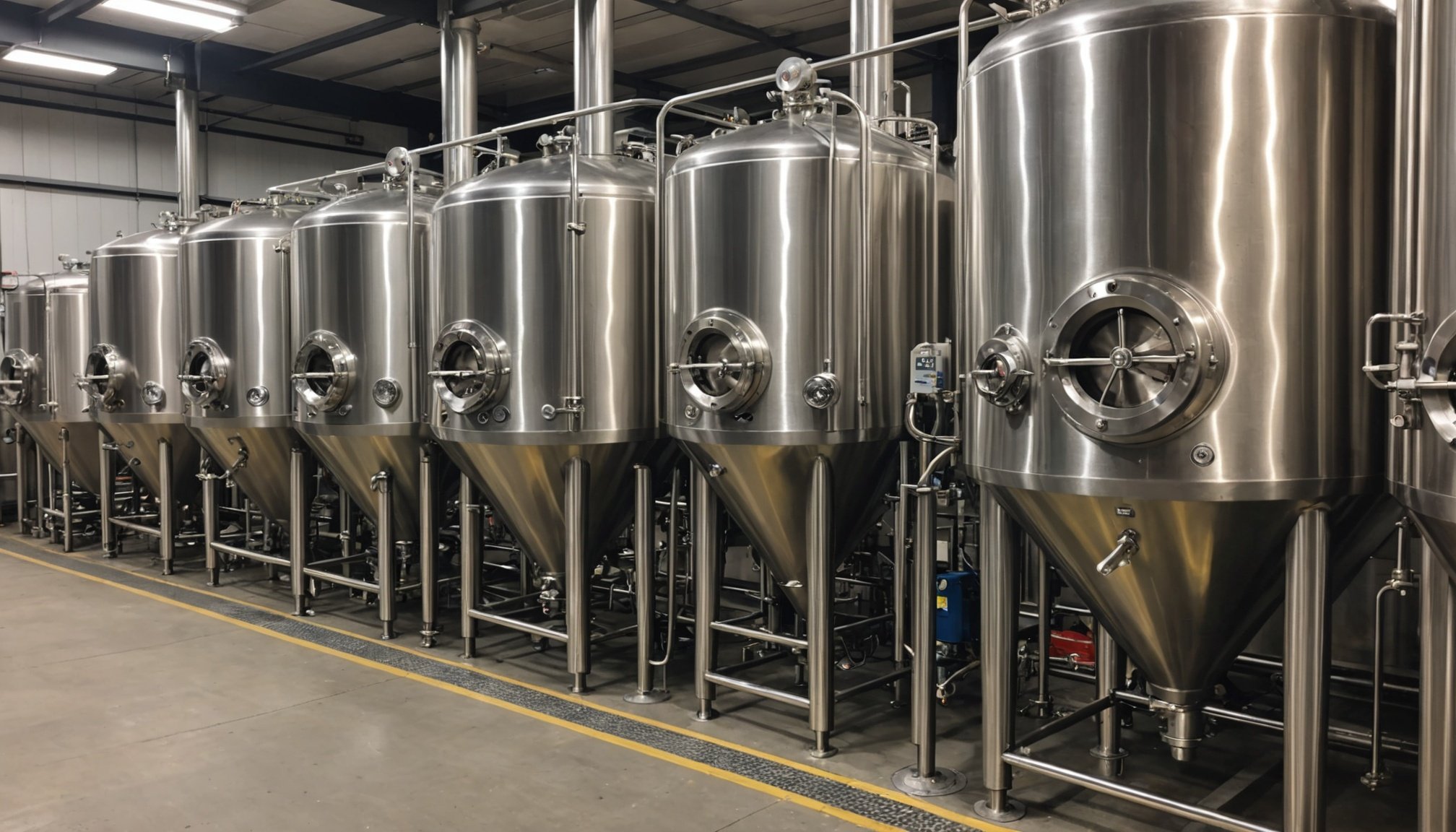Overview of Brewery Distribution Challenges
The UK breweries face several significant brewery distribution challenges. One primary issue is navigating the complex logistics required to efficiently deliver products to retailers and consumers. This challenge is further exacerbated by factors such as varying regulations across regions and limited access to advanced distribution networks.
Inefficiencies in distribution can severely impact a brewery’s profitability. When breweries struggle with logistics, it results in delayed deliveries, increased operational costs, or unsold stock. Such inefficiencies can hinder growth and limit their market reach. Moreover, logistical missteps can damage a brewery’s reputation, making it difficult to retain customers.
Also to read : Revolutionizing customer satisfaction: how uk financial institutions use predictive analytics to elevate user experience
The competitive landscape in the UK brewery market adds to distribution pressures. The market is crowded with well-established and emerging breweries, each vying for shelf space and consumer attention. In this environment, breweries must streamline their distribution processes to stand out. Efficient distribution is a crucial differentiator that can enhance a brand’s visibility and credibility.
By addressing these distribution challenges, UK breweries can improve their market positioning and ensure long-term success. Identifying and rectifying these issues will not only boost profitability but also empower them to effectively compete in a dynamic and demanding market.
Innovative Distribution Strategies
The brewing industry is experiencing a revolution in brewery logistics thanks to cutting-edge technologies. By integrating smart systems, breweries can streamline their distribution processes significantly. Technologies such as GPS tracking and real-time data analytics ensure more accurate delivery times and reduce downtime. Additionally, implementing innovative distribution strategies, like using autonomous vehicles, adds a layer of efficiency previously unattainable.
Embracing agile distribution models can deliver numerous benefits. These models allow breweries to adapt quickly to market demands, ensuring supply meets consumer needs without overstocking. Furthermore, agile models can enhance customer satisfaction by providing timely deliveries and reducing costs through more efficient route planning.
Successful case studies from UK breweries highlight the advantages of these strategies. For instance, BrewDog’s partnership with a leading logistics company resulted in a 20% reduction in delivery times. They achieved this by utilizing data-driven insights and optimizing their supply chain operations. Another example is Camden Town Brewery, which adopted a fleet of electric delivery vehicles, demonstrating a commitment to sustainability while enhancing distribution efficiency.
By prioritising brewery logistics and staying ahead with innovative distribution strategies, breweries can not only meet current expectations but also create a competitive edge in the marketplace.
Technology Solutions for Optimization
In an ever-evolving industry, breweries are embracing technology solutions to enhance efficiency and effectiveness. From automating inventory management to optimizing distribution routes, these innovations are vital.
Automation tools for inventory management
For breweries, maintaining optimal stock levels is crucial. Automation tools streamline inventory tracking by using sensors and software. This reduces human error and ensures that inventory levels are always accurate. Such tools help prevent stockouts or excess supply, thereby optimizing costs and production schedules.
Route optimization software
Distribution is another critical area where technology can make a substantial impact. Route optimization software allows breweries to plan and execute the most efficient delivery routes. This not only minimizes fuel and time costs but also improves customer satisfaction by ensuring timely deliveries. By analysing traffic patterns and delivery constraints, breweries can achieve significant logistical improvements.
Blockchain for transparency in supply chains
In terms of transparency, blockchain technology offers a real game-changer for breweries. By providing an immutable ledger, blockchain ensures that every step in the supply chain is recorded and verifiable. This boosts customer trust and enhances product integrity.
Benefits of technology adoption include improved operational efficiency and cost savings. These tools are versatile, catering to breweries of various sizes. For instance, a small craft brewery might utilize basic inventory software, while a large operation could implement comprehensive automation solutions. Real-world examples underscore the potential for technology to revolutionise brewery operations. BrewDog, known for its innovative approach, has integrated technology across its processes, showcasing tangible benefits in efficiency and sustainability.
Best Practices from Leading UK Breweries
In the competitive world of beer production, UK breweries are thriving by embracing best practices that focus on distribution performance. This performance is significantly enhanced by strategic, data-driven decision-making. Successful breweries have adopted an analytical approach, scrutinising sales patterns and consumer preferences to optimise their supply chain operations. Such insights allow breweries to predict demand more accurately and adjust distribution practices effectively.
For instance, many breweries benefit from robust partnerships with local distributors and retailers. These alliances are crucial as they ensure the smooth delivery of products to a wider customer base, facilitating real-time feedback on consumer tastes and preferences. Establishing strong relationships with these partners ensures a consistent flow of products from the brewery to the end customer, enhancing overall market penetration and brewery performance.
Furthermore, collaborating with retailers provides breweries the opportunity to access valuable market insights and pivot their strategies accordingly. This proactive method not only bolsters distribution efficiency but also helps in responding to market trends swiftly. As a result, breweries can maintain a competitive edge while also fostering innovation within the sector. By prioritising these best practices, UK breweries continue to thrive amidst evolving consumer demands.
Data Analysis and Performance Metrics
Understanding the dynamic environment of breweries requires delving into key performance metrics. These metrics, such as Key Performance Indicators (KPIs), are crucial for determining the effectiveness of distribution. They highlight areas needing improvement and support data-driven decision-making across brewery operations.
Tracking distribution effectiveness often involves scrutinizing the logistics of product delivery, stock management, and customer satisfaction levels. By leveraging KPIs, breweries can measure metrics like delivery timelines, inventory turnover, and return rates. This leads to optimizing supply chains and distribution networks.
Data analytics plays a pivotal role in enhancing operational decision-making. Powerful tools like statistical software and data visualization platforms allow stakeholders to identify patterns, forecast trends, and make informed decisions. Implementing data analytics enables breweries to predict consumer demand, manage inventory more effectively, and ultimately enhance profitability.
Various tools and methodologies are available for tracking performance within breweries. Performance dashboards and automated tracking systems provide real-time updates on critical metrics. Software solutions can compare historical data, forecast future trends, and streamline operations through data integration.
Employing performance metrics and data analysis empowers breweries to operate more efficiently, making data an invaluable resource in their strategic toolkit.
Future Trends in Brewery Distribution
As the brewing industry evolves, consumer preferences are playing a pivotal role in shaping distribution methods. Increasing demand for craft beers and local products is prompting breweries to adapt by focusing on more personalised and flexible distribution strategies. Many consumers seek unique flavors, causing breweries to diversify and cater to niche markets. This trend encourages more collaborations between local breweries and retailers, leading to easier access to a variety of products.
Sustainability impacts distribution strategies significantly in the brewing world. Breweries are shifting towards environmentally-friendly practices, such as utilising eco-friendly packaging and optimising transportation to reduce carbon footprints. These practices not only address environmental concerns but also resonate with the eco-conscious consumer base, fostering brand loyalty and positive brand perception.
E-commerce and direct-to-consumer sales contribute greatly to future distribution models. Advances in online shopping technology allow breweries to reach broader markets efficiently and cost-effectively. By leveraging e-commerce, breweries can provide enhanced customer experiences through personalised recommendations and flexible delivery options. Direct-to-consumer strategies, in particular, enable breweries to retain more control over their brand narrative and consumer relationships, adapting quickly to changing consumer demands.











